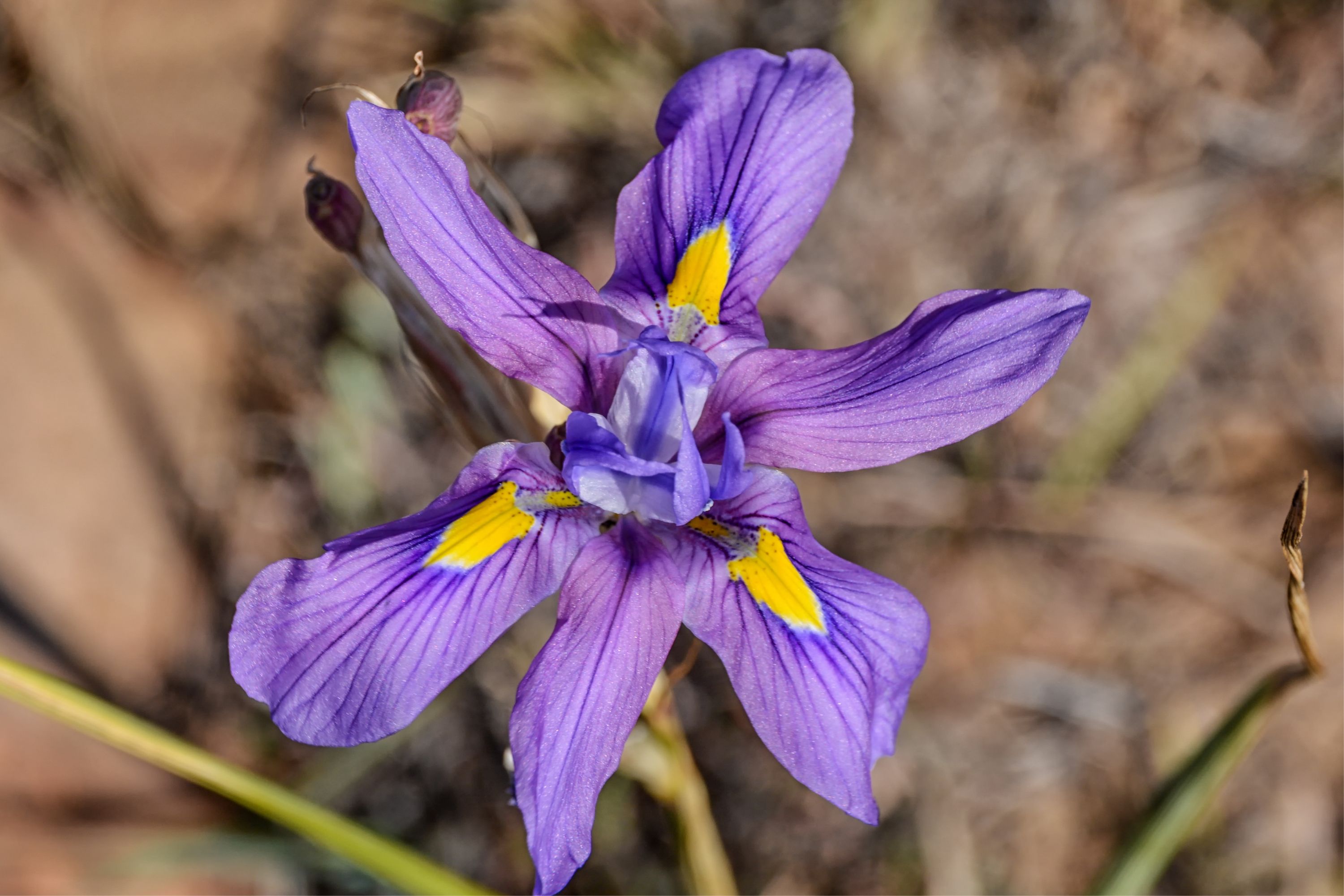Many-spike moraea
(Moraea polystachya)

Description
Moraea polystachya, commonly known as the many-spike moraea or yellow-eyed moraea, is a captivating flowering plant that belongs to the Iris family, Iridaceae. Renowned for its vibrant and intricate blooms, Moraea polystachya has gained popularity among plant enthusiasts and gardeners alike. Native to the southwestern Cape region of South Africa, this remarkable species has become an alluring addition to gardens worldwide. In this article, we will delve into the various aspects of Moraea polystachya, including its taxonomy, morphology, distribution, cultivation, and cultural significance. Taxonomy and Nomenclature Moraea polystachya was first described by the Scottish botanist Robert Brown in 1807. The genus name "Moraea" is derived from the Greek word "moros," meaning "foolish" or "silly," referring to the unpredictable nature of the plant's flowering patterns. The species epithet "polystachya" originates from the Greek words "poly," meaning "many," and "stachys," meaning "spike," alluding to the plant's inflorescence with multiple flower spikes. Morphology and Characteristics Moraea polystachya is a perennial herbaceous plant that typically reaches a height of 20 to 40 centimeters (8 to 16 inches). The plant features a corm, an underground storage organ similar to a bulb, from which the leaves and flowers emerge. The leaves are linear in shape, usually measuring about 10 to 20 centimeters (4 to 8 inches) in length, and are arranged in a fan-like manner. They possess a glaucous green coloration, which enhances the overall aesthetic appeal of the plant. The most captivating feature of Moraea polystachya is undoubtedly its mesmerizing flowers. The inflorescence consists of several slender flower spikes, each bearing a cluster of bright yellow to golden-yellow blooms. The flowers possess six petals arranged in two whorls, with the outer three petals being larger and more prominently marked with darker yellow or orange patterns. The inner three petals are smaller and typically lack the markings, providing an exquisite contrast. The blooms open in succession, allowing for an extended period of flowering throughout spring and early summer. Distribution and Habitat Moraea polystachya is endemic to the southwestern Cape region of South Africa. It occurs naturally in a range of habitats, including sandy flats, rocky slopes, and moist areas near rivers and streams. Within its native range, the species is adapted to the Mediterranean climate characterized by cool, wet winters and hot, dry summers. The plant thrives in well-drained soils and requires a sunny or lightly shaded position for optimal growth. Cultivation and Care Due to its captivating blooms and relative ease of cultivation, Moraea polystachya has gained popularity among gardeners and plant enthusiasts worldwide. Here are some guidelines for successfully growing and caring for this remarkable species: Climate: Moraea polystachya is well-suited to temperate and Mediterranean climates. It can be grown outdoors in USDA hardiness zones 8 to 10, where temperatures do not fall below 20°F (-6°C). Soil: The plant thrives in well-drained, sandy or loamy soils. A soil pH between 6.0 and 7.5 is considered ideal. Sunlight: Moraea polystachya requires full sun to part shade. It is important to provide adequate sunlight to ensure robust growth and abundant flowering. Watering: During the active growth phase, water the plant regularly to keep the soil evenly moist. However, avoid waterlogging, as this can lead to rotting of the corm. In the dormant period, reduce watering and allow the soil to dry out slightly between waterings. Fertilization: Apply a balanced, water-soluble fertilizer during the growing season to promote healthy growth and abundant flowering. Follow the manufacturer's instructions for the appropriate dosage and frequency. Mulching: Mulching around the base of the plant helps conserve soil moisture, suppress weed growth, and provide some insulation during extreme temperatures. Use organic mulch, such as compost or bark chips, and apply it in a thin layer. Propagation: Moraea polystachya can be propagated through division of corms or by seeds. Corm division is typically carried out during the dormant period. Carefully separate the corms, ensuring that each division has sufficient roots and shoots. Plant the divisions in separate containers or directly in the ground at the appropriate depth. Pests and Diseases: Moraea polystachya is generally resistant to most pests and diseases. However, like many plants, it may be susceptible to aphids, slugs, and snails. Regular inspection and prompt action will help mitigate any infestations. Additionally, ensure good air circulation around the plant to prevent fungal diseases. Cultural Significance and Symbolism Moraea polystachya holds cultural significance in its native region, where it is admired for its beauty and resilience. In South Africa, the plant is often associated with the arrival of spring and is celebrated for its vibrant yellow flowers, which symbolize renewal, happiness, and positivity. Beyond its cultural importance, Moraea polystachya has become a beloved ornamental plant worldwide. Its stunning flowers and relatively low maintenance requirements make it a desirable addition to gardens, rockeries, and floral displays. The plant's unique flowering pattern, with its blooms opening in succession, adds an element of surprise and intrigue to any landscape. Conclusion Moraea polystachya stands as a botanical marvel, captivating enthusiasts with its vibrant flowers and charming presence. Whether admired for its cultural significance, its ornamental value, or its ecological role in its native habitat, this remarkable species continues to enthrall plant lovers and exemplify the beauty and diversity of the natural world.
Taxonomic tree:







